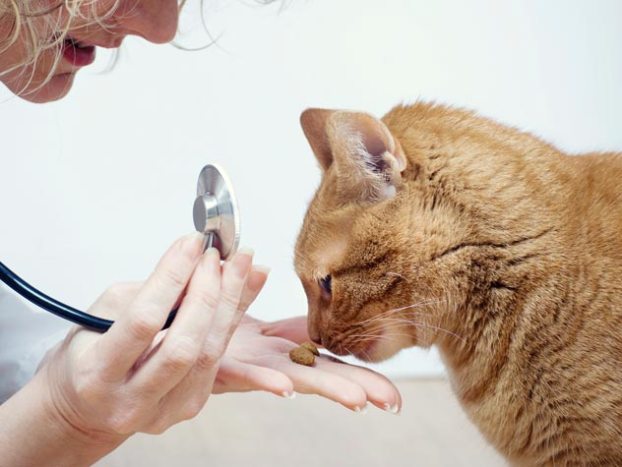According to a study by the American Veterinary Medical Association, dogs visit the vet about 2.3 times a year, compared to cats’ 1.1 annual visits. And only 28% of cats see a vet once or more per year in contrast to 58% of dogs. That means, cats are only HALF as likely to see their veterinarian as dogs, even when they are sick!
Why the Discrepancy?
One main reason for the discrepancy is that many pet owners have a false perception that felines are more self-sufficient and don’t need medical care. Quite the contrary is true, however. Cats are extremely good at hiding early signs of illness. Often times, by the time your cat starts showing outward signs of illness, the disease has manifested and becomes much more difficult and expensive to treat.
Preventive Care for Cats
Preventive care for your cat results in significant savings over the life of your kitty. Annual or semi-annual check ups can detect illness in the very early stages, making it easier and often less expensive to treat. Common illnesses for cats are obesity and hyperthyroidism (over active thyroid). Obesity in a cat can lead to diabetes, arthritis, and respiratory issues. These issues are manageable when detected and treated in the early stages.
Veterinarians also recommend vaccinations to prevent potentially fatal illnesses. Your vet may recommend FVRCP, Feline Leukemia, and Rabies vaccines. In most areas a current Rabies vaccine is required by law for all cats and dogs.
Monthly flea preventatives are also an important part of your cat’s wellness. Even indoor cats are at risk because fleas can come in on the dog, your shoes, even pass through a screen door or open window!
Many cat owners say they don’t bring their cat to the vet because it’s too hard to get them in the carrier.
Here are a few tips to make the trip easier for you and your kitty, and get him/her the wellness care they deserve!
Get your Cat to Like the Carrier
Many cats run and hide as soon as they see the carrier come up from the basement. Start keeping the carrier accessible to your kitty at all times. Your cat will most likely start to investigate the carrier after a few days. Once he sees he can come and go as he pleases, the carrier won’t be so scary. You can even try a calming wipe (Feli-Way) on the carrier to help ease your kitty’s anxiety.
Practice Traveling with your Cat
Cats are not usually too fond of car rides but with some practice they can become more comfortable in the car. Once you’ve got kitty used to the carrier, try taking him for some short car trips. Start by just going around the block, and gradually build up the amount of time spent in the car.
Keep Calm at the Vet
Now that kitty is comfortable in his carrier and you’ve gotten to the vet, remain calm. By now your kitty feels safe in his carrier. Avoid taking him out of the carrier in the waiting room filled with barking dogs, curious children, and other unhappy kitties. Your cat will feel safest in his carrier and will be less stressed when it’s time for the veterinarian to perform his physical examination.
Remember, cat’s need to see the vet at least once a year. Call your veterinarian today and schedule a wellness exam.
